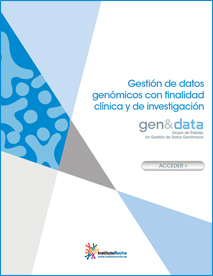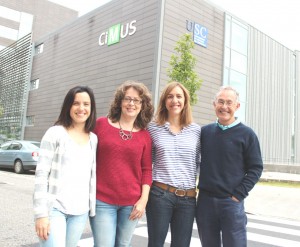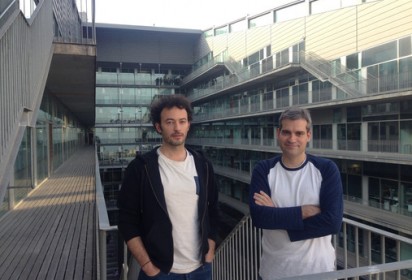Mitochondrial and nuclear DNA matching shapes metabolism and healthy ageing
Posted by PanCanRisk Autor in News
‘Nature’ published the study led by Fundación Galega de Medicina Xenómica and USC
Researchers at the National Center for Cardiovascular Research Carlos III (CNIC) in collaboration with the University of Santiago de Compostela and Zaragoza, the Medical Research Council UK and the Fundación Pública Galega de Medicina Xenómica (Sergas) demonstrated how the combination and interaction our two genomes, nuclear and mitochondrial, triggers a cellular adaptation that will have repercussions throughout our lives and that will determine the quality of aging.
Click here for more information

The Gen&Data multidisciplinary group composed of experts in different areas, was created with the aim of analyzing, from different perspectives, the current situation, needs, interests and conflicts generated by the management of genomic data in their applications for clinical purposes and research
Researchers have studied data from the International Cancer Genome Consortium (ICGC) and found that insertions of genes or parts of genes are commonplace in cancer genomes
Rearrangement of the genome is common in cancer – for example, deletions, rearrangements and inversions. However, little is known about insertions into the genome and the role they play in cancer.
To address this, the EU-funded CANCER INSERTOME (The landscape and functional impact of tumour-specific genomic insertions of 1,000 cancer genomes) initiative studied massive quantities of cancer genome data.
Insertions in the DNA arise from either transposable elements, DNA that can move around the genome, or viruses that insert themselves at random. This process is known as retrotransposition, and this is what researchers searched for.
CANCER INSERTOME found that retrotransposition occurs at least once in about half of all cancers, and more commonly in lung and colorectal cancers. For these cancers, the rates are 93 % and 75 %, respectively.
Researchers also identified a mutation process in cancer cells called L1-mediated 3′ transduction, which made up about a quarter of all retrotranspositions studied. Of these, over 2 % involved relocation of entire genes or gene regions.
This project has helped to highlight the importance of retrotransposition in cancer genomics. The understanding generated by this project will help cancer biologists fight the disease in the long term.
The health area of Pontevedra will be the third of Galicia to implement early detection of colon cancer after Ferrol and Ourense. The Department of Gastroenterology collaborates with Pancanrisk in the sample collection
Researches at the Centre Regulació Genòmica clarify the debate on one of the crucial moments in the evolution of life: the incorporation of mitochondria to cells. The work is published in Nature and it is accompanied by an article -commentary that highlights its relevance.



